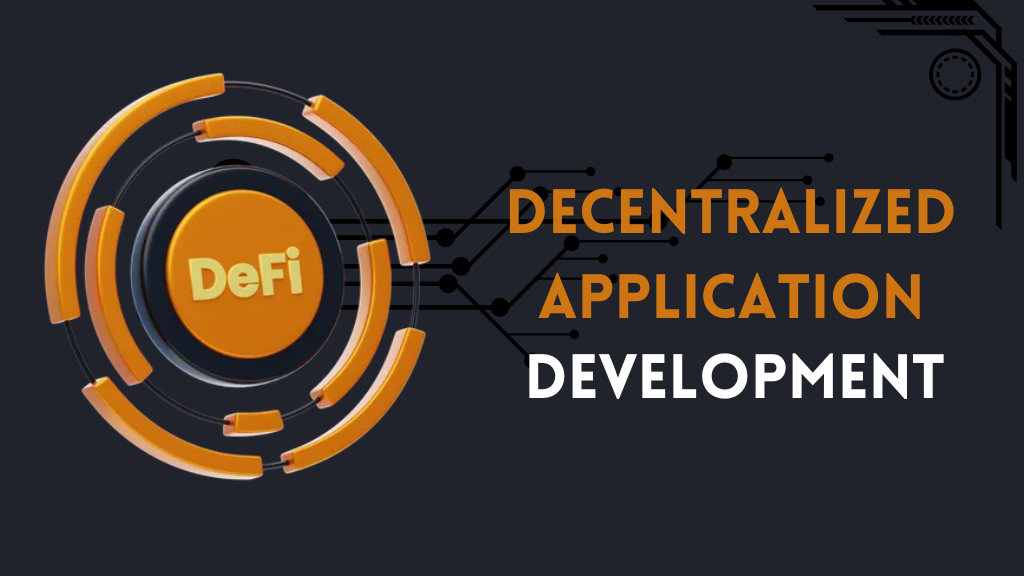Building the Next Generation of Decentralized Applications
 flynn rider
flynn rider
dApp (Decentralized Application) development is a dynamic and evolving field in the blockchain ecosystem. dApps operate on decentralized networks like Ethereum, Binance Smart Chain, or Polkadot, utilizing smart contracts to execute functions autonomously, eliminating intermediaries. Here's a detailed guide covering the fundamentals, development process, key components, and benefits of dApp development:
1. What are dApps?
Decentralized applications (dApps) are digital applications that run on blockchain networks instead of centralized servers. Unlike traditional apps, dApps leverage the blockchain's decentralized nature, providing transparency, security, and censorship resistance. dApps can be anything from financial services (DeFi), gaming, voting systems, supply chain tracking, social networks, and more.
2. Key Characteristics of dApps
Decentralization: Operates on a decentralized network of computers (nodes) using blockchain technology.
Open-source: The code is publicly available, ensuring transparency.
Incentivized model: Users and developers are incentivized with tokens or cryptocurrencies.
Smart Contracts: Autonomous contracts that execute when predefined conditions are met.
Immutability: Once deployed, the application’s code and data are tamper-proof.
3. Types of dApps
Financial (DeFi): Decentralized finance applications such as lending, borrowing, trading, and staking (e.g., Uniswap, Aave).
Gaming: Blockchain-based games where players can own assets as NFTs (e.g., Axie Infinity).
Marketplaces: Decentralized exchanges, NFT marketplaces (e.g., OpenSea).
Social Networks: Decentralized social media platforms (e.g., Steemit).
4. Technologies Used in dApp Development
Blockchain platforms: Ethereum, Binance Smart Chain (BSC), Solana, Polkadot, Tezos.
Smart contracts: Written in languages like Solidity (Ethereum/BSC), Rust (Solana), or Vyper.
Front-end: Typically built using JavaScript frameworks (e.g., React.js, Angular) with blockchain integration libraries like Web3.js, Ethers.js, or Moralis.
Backend: Distributed storage systems like IPFS, Filecoin, or Arweave are used, along with Ethereum nodes for interacting with smart contracts.
5. dApp Development Process
a. Define the use case and choose the platform
Identify the problem you're solving with the dApp.
Choose the blockchain network that suits your needs (e.g., Ethereum for its mature ecosystem or Solana for scalability).
b. Smart Contract Development
Smart contracts are the backbone of dApps. Write and test contracts using platforms like:
Ethereum Virtual Machine (EVM) for Solidity-based development.
Testnets (like Rinkeby or BSC Testnet) for deploying and testing before going live.
IDE: Use Remix, Truffle, or Hardhat for compiling, testing, and deploying smart contracts.
c. Front-end Development
Create the user interface (UI) using JavaScript frameworks and integrate smart contracts using libraries such as Web3.js, Ethers.js, or Moralis.
Connect users' wallets (e.g., MetaMask, Trust Wallet) for interacting with the dApp.
d. Backend and Storage
- Instead of traditional centralized servers, decentralized storage like IPFS (InterPlanetary File System) can be used for data storage, while some centralized backend services may still be required for off-chain components.
e. Token Integration
dApps often use native tokens or cryptocurrencies for in-app transactions.
You can create and integrate your ERC-20 (fungible tokens) or ERC-721/ERC-1155 (NFTs) tokens.
f. Security Audits
- Smart contracts should undergo rigorous security audits by third-party firms like Certik, Quantstamp, or OpenZeppelin to prevent vulnerabilities and hacks.
g. Deployment and Maintenance
Deploy the dApp on the selected blockchain.
Regular updates and bug fixes are essential since blockchain contracts are immutable once deployed, though upgradeable contracts and proxy patterns are common solutions.
6. Challenges in dApp Development
Scalability: Most blockchains, especially Ethereum, face issues with scaling due to high transaction fees and slower processing.
User Adoption: dApps must overcome usability barriers to attract non-technical users.
Security: Vulnerabilities in smart contracts or dApp code can lead to hacks and financial losses.
Complexity: Developing a dApp requires deep knowledge of blockchain technology, smart contract programming, and security best practices.
7. Benefits of dApps
Censorship Resistance: Since there’s no central authority, it’s difficult for governments or corporations to shut them down.
Transparency: dApp code and transactions are publicly visible on the blockchain.
Security: Blockchain provides cryptographic security, making dApps resistant to traditional hacking methods.
Decentralized Ownership: Ownership and control are distributed among users, aligning with Web3 principles.
Monetization: Developers can easily integrate tokens, staking, or yield generation models for monetization without intermediaries.
8. Popular dApp Use Cases
Decentralized Finance (DeFi): Lending, borrowing, exchanges (e.g., Compound, Aave, Uniswap).
Gaming: Games with tokenized in-game assets and NFTs (e.g., Decentraland, Axie Infinity).
Marketplaces: NFT platforms, decentralized exchange of goods or assets (e.g., OpenSea, Rarible).
Governance: Decentralized Autonomous Organizations (DAOs) allow community governance for projects (e.g., MakerDAO).
9. Best Practices for dApp Development
User-Friendly Design: Ensure a smooth user experience by simplifying the blockchain aspect for non-tech-savvy users.
Security First: Auditing your code and following best security practices is essential to avoid hacks.
Gas Optimization: Optimize smart contracts to reduce gas fees and improve performance.
Upgradability: Design smart contracts to be upgradable, ensuring flexibility for future changes.
10. Future of dApp Development
Layer 2 Solutions: To improve scalability and reduce fees, Layer 2 solutions like Optimism and Arbitrum are being adopted.
Cross-chain dApps: Developers are focusing on building cross-chain dApps that operate across multiple blockchains, enhancing interoperability (e.g., Polkadot, Cosmos).
Web3: As the Web3 ecosystem grows, dApps will play a critical role in empowering decentralized applications, ownership of digital assets, and self-sovereign identity.
dApp development companies have vast potential to disrupt industries across the board, from finance and gaming to supply chains and social networks, by enabling transparency, autonomy, and user empowerment.
Contact:
Ready to bring your DeFi to life? Reach out to the team at
WhatsApp - +91 9500575285
Email - hello@coinsclone.com.
Feel free to ask for more specific insights on any area!
Subscribe to my newsletter
Read articles from flynn rider directly inside your inbox. Subscribe to the newsletter, and don't miss out.
Written by

flynn rider
flynn rider
I am a Blockchain enthusiast that enjoys talking about cryptocurrencies and their growth. By doing that, I hope to inspire aspiring entrepreneurs to come up with company concepts.